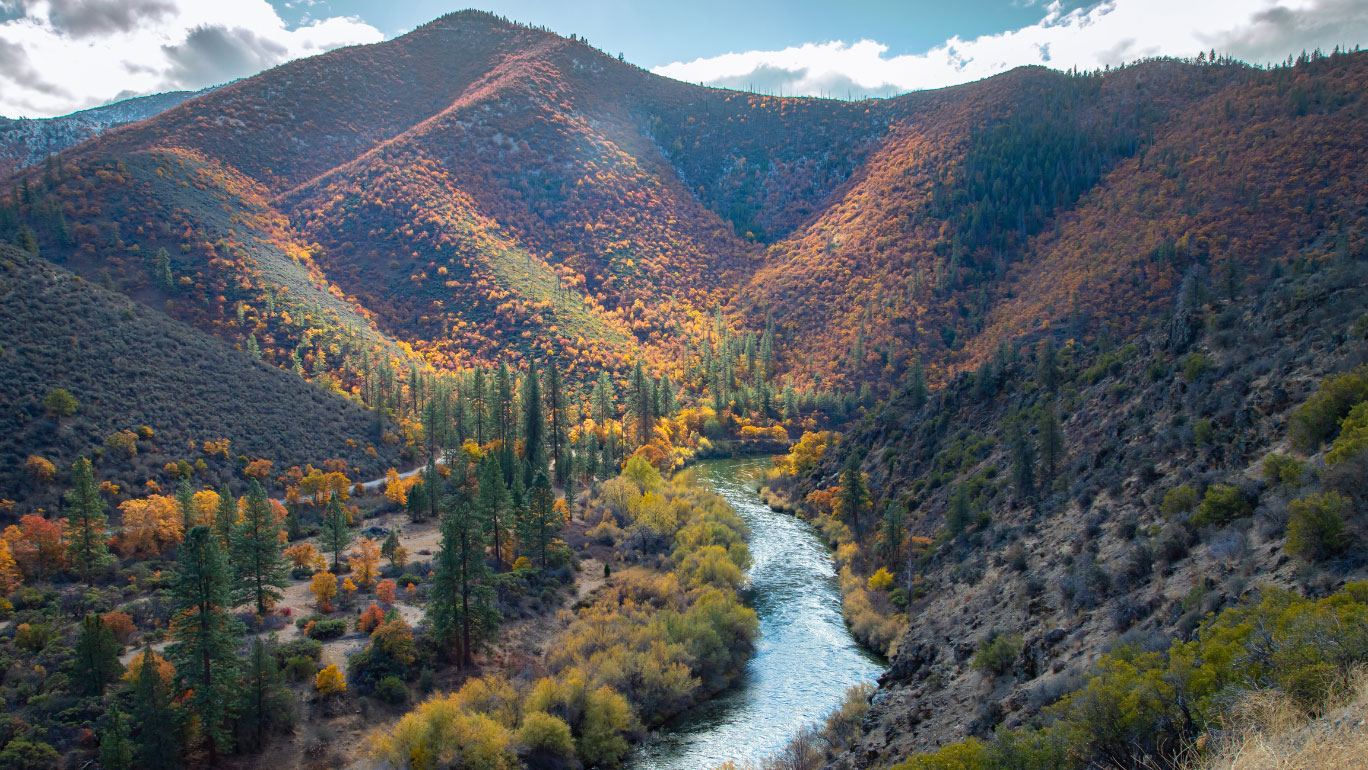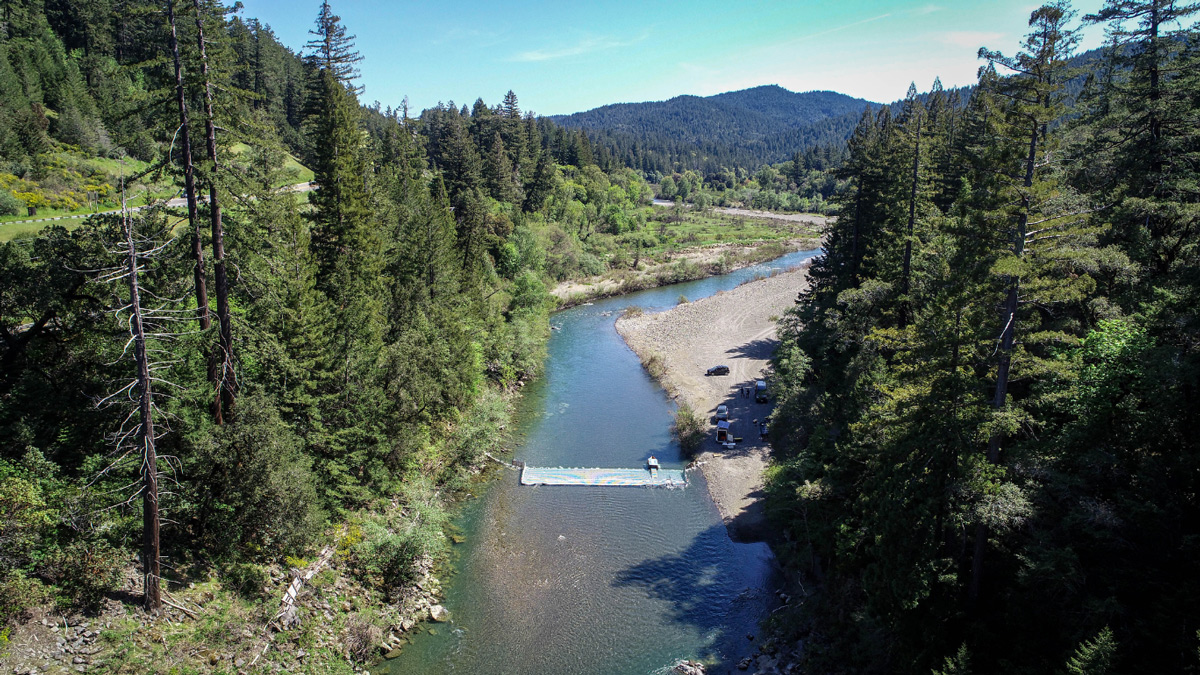Is a rare trout important?
We were hiking downhill for once. George, Che, and I were on a wilderness excursion chasing backcountry trout. To our right, within sight of our trail, Golden Trout Creek had exited a meadow and was now gaining momentum as it gurgled and cascaded into a small freestone stream. Open groves of ponderosa and Jeffrey pine dominated a landscape more akin to Northern California’s Cascade range than the typical granite underfoot throughout most of the southern high Sierra. To our left, the raw volcanic ridge of a clunky ragged lava flow called The Malpaise roughly paralleled our route. A type of rapidly cooling basalt flow, known as A’a, the chocolate brown ridge divided the creek from Volcano Meadows, out of sight and behind the flow.
The day before we had wandered through the meadow. Fed by small snowmelt streams called stringers the water vanished into the ground upon entering the meadow. The stream bed meandering through it was dry as an old bone. What had happened to the spectacular and diminutive Volcano Creek golden trout, isolated for so long by the Malpaise? On the eastern edge of the meadow, we found a spring where a small length of ‘leap across’ stream wandered beneath meadow grass green and vibrant.
There, beneath our feet, darting about from our approach and seeking refuge under the bank, were the Volcano Creek golden trout. Even when the creek is flowing, it disappears beneath the lava flow, isolating the trout in the meadow for millennium. These circumstances of volcanic activity are not dissimilar to the McCloud River redband trout, which I discuss in my book Shasta’s Headwaters.

Volcano Creek golden trout.
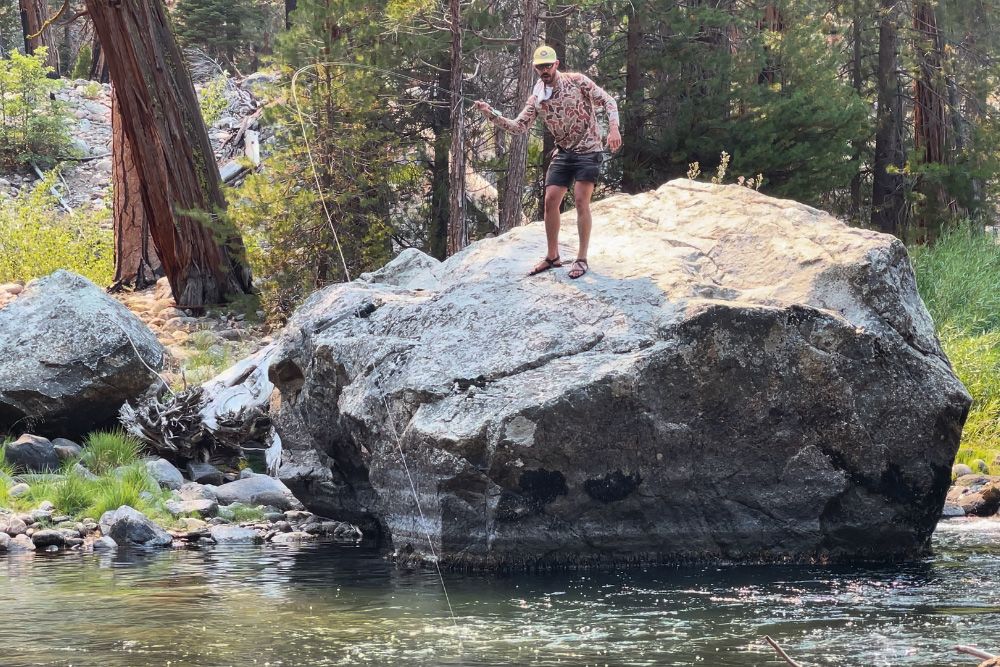
George Revel casts off of a rock.
We drop our packs above the bridge, dig out and assemble our fishing paraphernalia. The creek is maybe a mile long, before joining Golden Trout Creek above the falls. We trudge along its banks, spooking a coffee-colored sow black bear and its cub. They gallop casually upstream and out of sight around a bend. The stream is teeming with goldens, which look like the Volcano Creek fish, quite distinct from the Golden Trout Creek population next door. We catch a few on tiny mayfly patterns beneath gossamer tippets before turning our attention to filming them under water. It turns out to be not so simple; they seem to have a reluctance for interaction with the Sapiens. Who knew?
Perfectly symmetrical, these diminutive trout look as though they belong on some tropical reef, not tucked away at the base of a lava flow in some forgotten backwater of the Sierra Nevada.
Back on the trail, a deep gash yawns beneath us, miles in length, dividing the Great Western Divide from the slightly higher eastern escarpment of the range where Mount Langley juts to over 14,000 feet out of sight to the north, yet seemingly a hop, skip, and a jump from us by our map. Between these two parallel north south aligned ribs of alpine peaks, the Kern River, flows south 2500 feet beneath us and far out of sight.
The canyon, with its granitic walls, looks something like a mini version of Yosemite Valley, or more closely, the ragged tooth like ribs of King Canyon. Straight as an arrow, the Kern will finally disappear before the agricultural and oil field landscape of the San Joaquin Valley near Bakersfield. The canyon beneath us suggests nothing of the river’s ignoble terminus, only hinted of by the flat brownish yellow haze barely perceptible behind the mountains.
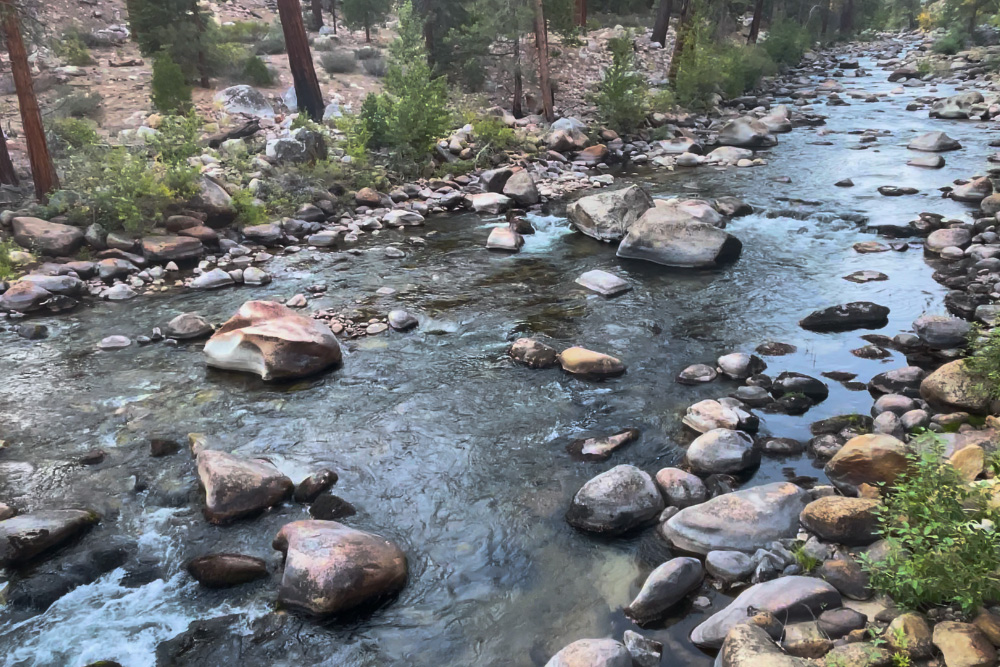
Kern River
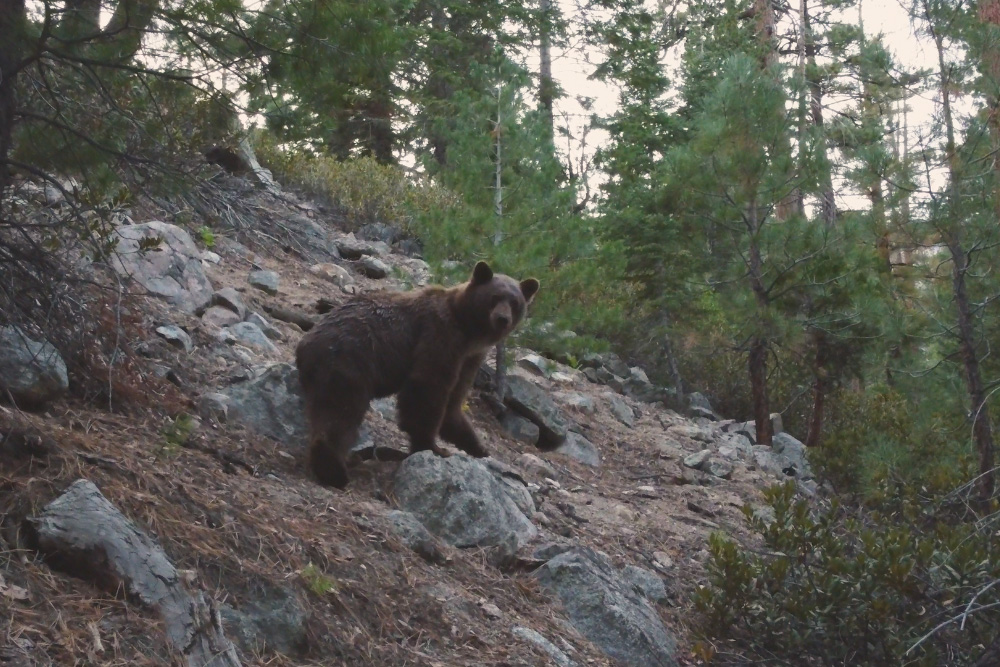
A black bear along the banks of Golden Trout Creek
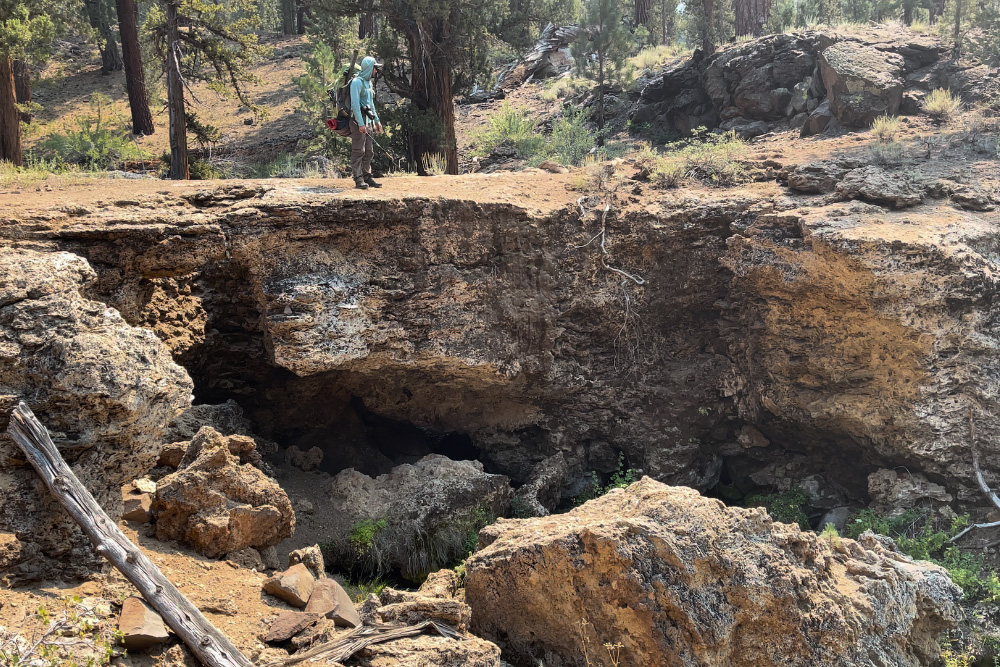
Natural Bridge, a series of tuff lava flow arches, where the creek dashes beneath

Tower Rock
The rumors of the fish here date back over 150 years. During 1867, a large landslide occurred a couple mile below us, creating Kern and Little Kern Lakes. An early account, suggesting the loose connection with facts anglers the world over are known for, included this: “So abundant were trout in Kern Lake, that it was common to fish with two rods. One would be cast with the right hand and, upon getting a fish of sixteen to eighteen inches in length, a second fish from among the school would take the second line. Then followed sport enough to please the most ennuied fisherman.” (From a 1909 account published by a fellow auspiciously named Ben Fish).
Rumors, always rumors. On the eve of our trip, in the village of Lone Pine, we dropped by for a libation at Jakes Place. When you tell people in a bar you are heading on a fishing junket, suddenly everyone in the room is a fishing expert. Eyes glistened and gleamed. Each had fished there in the distant past or knew of some aunt or uncle who had. As well, each had captured enormous Kern River rainbow. While one might be skeptical, it’s better to be encouraged than disparaged. It seemed the size of their trout were directly proportionate to the amount of alcohol consumed.
The fact is the river has plenty of rainbow trout. And some nice sized ones at that. However, the Kern River rainbow shares a story not dissimilar to the golden trout we had run across in the higher elevations. In our documentary called Liquid Gold, Search for the Golden Trout, I noted that in their original habitat, introduced rainbow trout hybridize with them while introduced brown trout eat them. A hatchery near the end of the canyon in Kernville planted various rainbow trout in the river from as far away as the Sission Hatchery in Mount Shasta.
“The Kern River rainbow have a high probability of disappearing…in the next 50 years, if not sooner."
SOS II: FISH IN HOT WATER

Kern River rainbow trout underwater
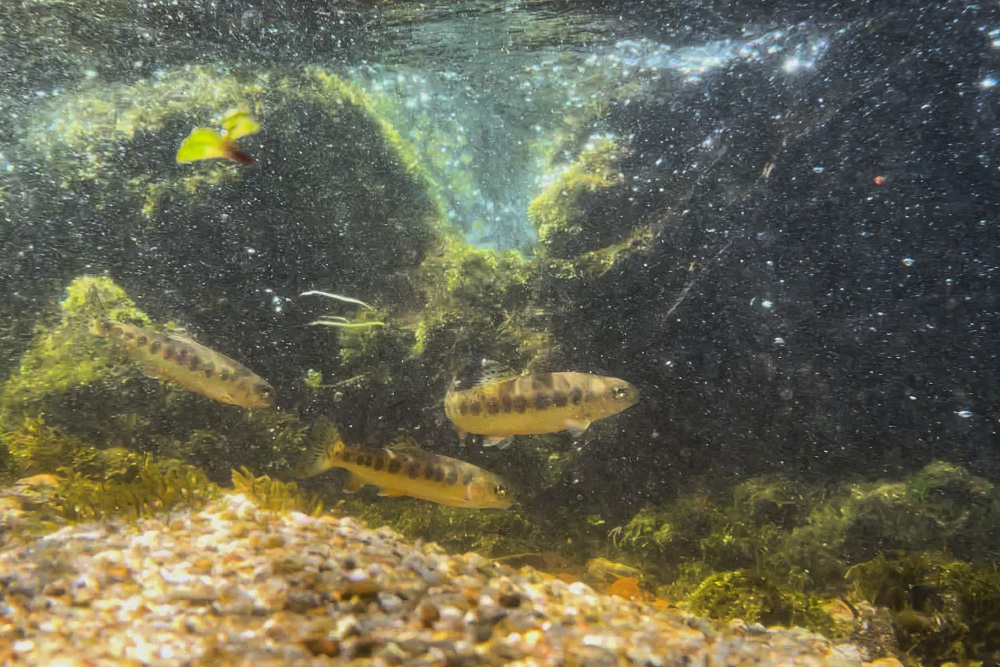
Golden trout underwater
The physical description is somewhat broad, “a slight gold tint, fine irregular spots all over their bodies, and larger fish may have a rosy streak along their sides.” (SOS II) We certainly caught fish which seemed to fit this description, though many looked like any other rainbow trout we might catch along a California freestone stream. Ultimately, the reality will be left to the geneticists to answer the question of whether there are any pure strain Kern River rainbow left, and what that would look like. Will they be 80% pure? More? Less?
In the geologic past, all three of these trout found in the southern end of the Sierra reached there through sloughs and channels connecting around the corner from the lower Kern to historic Tulare Lake (which re-emerged during the remarkable storms of the past winter) then through the Fresno sloughs, into the San Joaquin River proper, and ultimately the Pacific Ocean.
If they do still exist, and there is an opportunity to preserve them, efforts must be made. As a colleague said, “once a species blinks out, it is gone forever.’ To most, as the late Phil Pister, whom I called the Dean of the Golden Trout told me in our Liquid Gold documentary, “nobody cares if a golden trout is genetically pure, all they want to do is catch a pretty fish”.


